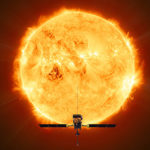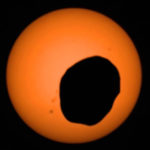
The National Science Foundation’s (NSF) Daniel K. Inouye Solar Telescope is commemorating its inauguration and what better way to do so than with the first images of the Sun’s chromosphere. This area of the Sun’s atmosphere is right above the surface and depicts region 82,500 kilometers across at a resolution of 18 km.

Being the world’s most powerful solar telescope, it’s capable of observing the Sun in visible to near-infrared wavelengths and has a 4.24-meter primary mirror in an off-axis Gregorian configuration boasting a 4-meter clear, unobstructed aperture. Thanks to adaptive optics capable of correcting for atmospheric distortions and blurring of the solar image, ultra high-resolution observations of features on the Sun as small as 20 km (12 mi) are possible.Astronaut Thomas Pesquet managed to capture this solar flare eruption hitting Earth.
- Optimum Magnification: Our telescope for kids and adults is quipped with two replaceable excellent-quality eyepieces (25mm and 10mm) for 24X and 60X...
- Excellent Quality Optics: This telescope is 600mm(f/6.7) focal length and 80mm aperture, 80mm aperture to capture more light picture and multi-fully...
- Portable And Convenient: Comes with a phone adapter and an adjustable aluminum tripod. Wireless remote control and carrying bag make it easier for you...
NSF’s Inouye Solar Telescope is the world’s most powerful solar telescope that will forever change the way we explore and understand our sun. Its insights will transform how our nation, and the planet, predict and prepare for events like solar storms,” said Sethuraman Panchanathan, NSF Director.







